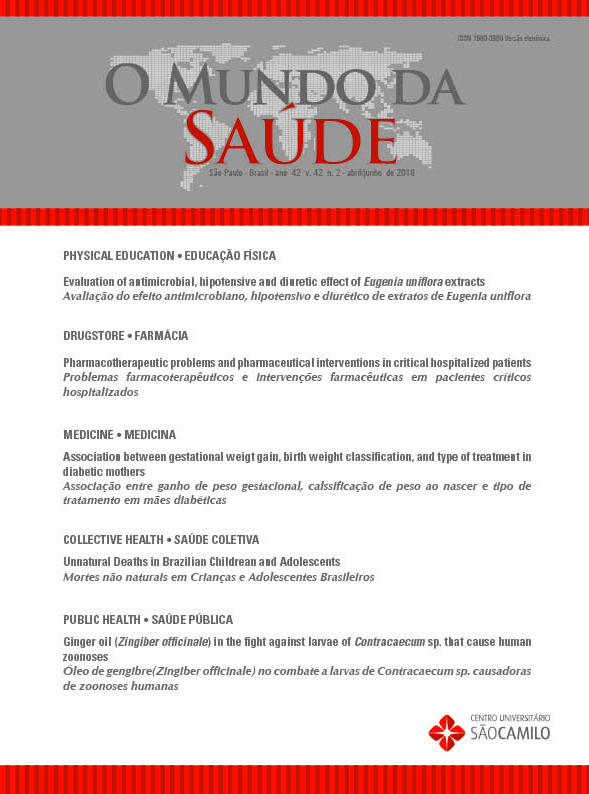Is there a difference between the lifestyle of hypertensive adults and elderly in the Family Health Program?
DOI:
https://doi.org/10.15343/0104-7809.20184202301315Keywords:
Risk factors, Hypertension, Quality of life, Health centersAbstract
Consequences of negative lifestyle behaviors may be different between adults and elderly, especially for hypertensive individuals. Therefore, this study compared the lifestyle of a group of hypertensive adults and elderly enrolled in the Family Health Program (FHP) of the city of Patos-PB. In a descriptive and cross-sectional study, 97 hypertensive patients of both sexes were randomly selected from FHPs and divided based on the age into two groups: Adults (<60 years, n= 44) and Elderly (≥60 years, n= 53). Lifestyle was assessed by the Individual Lifestyle Profile Scale (ILPS) composed of five components: Nutrition, Physical Activity, Preventive Behavior, Social Relationship and Stress Control. Each component was classified as negative (≤3 points) or positive (≥4 points). The ILPS scores were compared between the groups by the Mann-Whitney U test. Associations between component profiles and age groups were verified using the Chi-square test. Results showed that the Elderly presented a higher proportion of positive ILPS compared to Adults (P≤ 0.05), respectively, for Nutrition (n= 42, 79.2% vs. n= 26, 59.1%) and for Social Relationship (n= 49, 92.5% vs. n= 34, 77.3%). It is concluded that the Elderly were more conducive to a healthier lifestyle than the Adults. Because both age groups present a predominance of a negative profile in Physical Activity, it is suggested that the subjects adhere to the practice of physical exercise as a non-drug treatment, reducing the risk factors associated with hypertension.






























